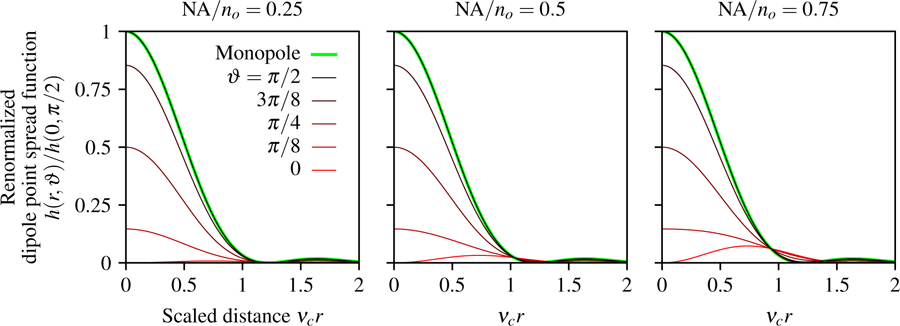Fig. 2.

Renormalized paraxial dipole point spread function as a function of the scaled radial coordinate νcr, the dipole inclination angle ϑ, and NA/no. For small numerical apertures (left) the irradiance pattern created by axial dipoles (red) is small compared to transverse dipoles (black), but the relative contribution of axial dipoles increases with the numerical aperture (see red lines from left to right). Additionally, we plot the monopole point spread function (green) and observe that the paraxial monopole and dipole models are identical for transverse dipoles (the green and black lines are coincident).
